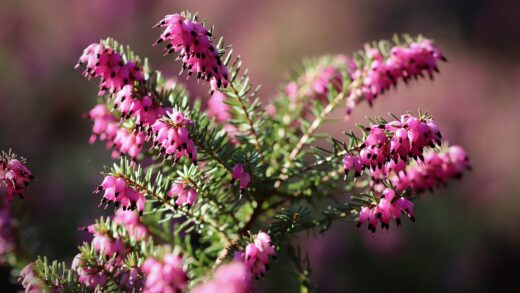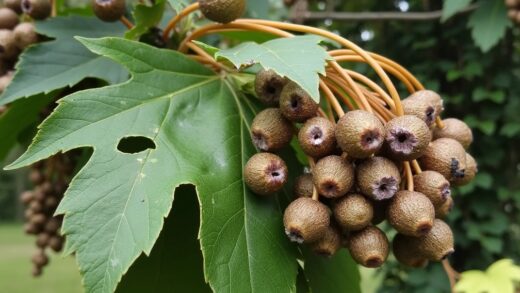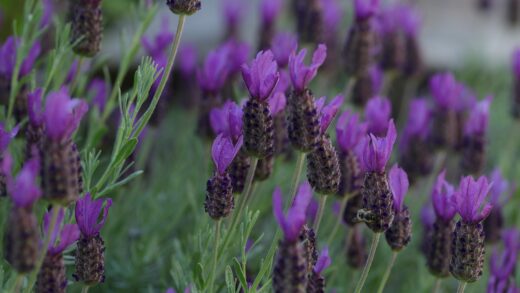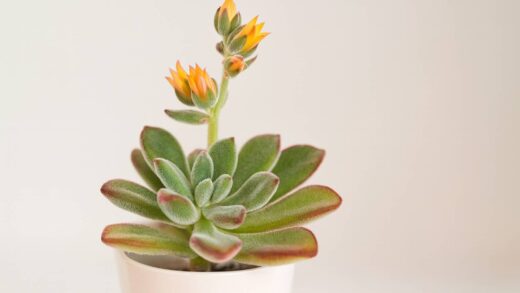When considering the nutrient requirements of sea thrift, the most important principle to embrace is that less is more. This hardy perennial is exquisitely adapted to thrive in nutrient-poor environments, such as coastal cliffs and sandy shores, where fertile soil is a rarity. Its entire system is geared towards efficiency, allowing it to extract the necessary minerals from the leanest of substrates. Consequently, the act of fertilizing sea thrift in a typical garden setting is often unnecessary and can even be detrimental to the plant’s health and appearance, making a hands-off approach the best strategy for success.
The primary danger of over-fertilizing sea thrift is the promotion of excessive foliar growth at the expense of flowers. A surplus of nutrients, particularly nitrogen, signals the plant to produce lush, soft, green leaves rather than investing its energy in creating its characteristic vibrant blooms. While the plant might appear larger and greener, this growth is often weak and floppy, causing the normally neat, compact mound to lose its form and become untidy. This soft growth is also more susceptible to pests like aphids and fungal diseases.
In most average garden soils, there are more than enough nutrients to sustain a healthy sea thrift plant without any supplemental feeding. These plants are not heavy feeders and will happily grow for years without any intervention. The focus for the gardener should be on providing the correct soil structure—namely, excellent drainage—rather than on enriching the soil’s nutrient content. Amending the soil with grit and sand is far more beneficial than adding compost or manure.
If you are planting sea thrift in a brand new garden bed with very sterile subsoil, or if you are growing it in a container where nutrients can leach out over time, a minimal approach to feeding might be considered. However, even in these scenarios, extreme caution should be exercised. A single, very light application of a balanced, slow-release fertilizer in the early spring is the most that should ever be contemplated. For the vast majority of situations, however, zero fertilization is the optimal path.
Understanding its preference for lean soil
Sea thrift’s preference for lean, infertile soil is a direct result of its evolutionary history. The coastal and alpine regions where it naturally grows are characterized by thin, rocky, or sandy soils that are low in organic matter and essential nutrients. Plants that colonize these challenging habitats have developed strategies to survive and thrive with minimal resources. Sea thrift accomplishes this with a deep and efficient root system capable of scavenging for sparsely available minerals.
More articles on this topic
Introducing this plant to a rich, heavily composted garden bed is like giving a person adapted to a sparse diet an overly rich feast; it overwhelms the system. The excess nutrients disrupt the plant’s natural balance. Instead of a sturdy, resilient plant with a profusion of flowers, you create a caricature of its true form—a soft, leafy mound with few, if any, blooms. This is a crucial concept for gardeners to grasp, as it runs counter to the common practice of enriching soil for most other ornamental plants.
The physical structure of lean soil is just as important as its low nutrient content. Sandy and gravelly soils are inherently well-aerated, allowing oxygen to reach the plant’s roots easily. This combination of low nutrients and high aeration creates the perfect environment for a healthy root system, which is the foundation of a robust plant. Rich, organic soils, on the other hand, tend to hold more moisture and can become compacted, reducing oxygen flow and creating conditions that are hostile to sea thrift’s roots.
When preparing a new planting area for sea thrift, resist the temptation to improve the soil in the traditional sense. If your soil is naturally sandy or gravelly, you need to do very little. If you have a richer loam or clay, your efforts should be focused on “diluting” its fertility and improving its drainage. This means incorporating inorganic materials like horticultural grit or sand, not adding more organic matter like compost, which would only exacerbate the problem by increasing both fertility and water retention.
When and how to fertilize (if necessary)
While sea thrift generally thrives on neglect, there are a few specific, limited circumstances where a very modest application of fertilizer might be warranted. The primary situation is when growing the plant in a container for multiple seasons. Over time, the repeated watering required for container plants can leach the few available nutrients out of the potting mix, potentially leading to a deficiency. In this case, a single feed in early spring can help replenish these lost minerals.
More articles on this topic
Another scenario is if a plant grown in the ground in exceptionally poor, sandy soil begins to show clear signs of a nutrient deficiency. These signs might include a general yellowing of the foliage (chlorosis) that is not attributable to overwatering, very stunted growth, or a complete failure to bloom for a season despite having adequate sunlight. It is important to first rule out other potential causes, such as poor drainage or insufficient light, before concluding that a lack of nutrients is the problem.
If you determine that fertilization is necessary, the choice of fertilizer and the application method are critical. Opt for a balanced, slow-release granular fertilizer, such as one with an N-P-K ratio like 5-5-5 or 10-10-10. Avoid fertilizers that are high in nitrogen (the first number in the ratio), as this will disproportionately encourage leafy growth. A fertilizer formulated for cacti and succulents or one designed for alpine plants would also be a suitable choice due to its low nutrient concentration.
Apply the fertilizer very sparingly in early spring as new growth begins. For a plant in the ground, sprinkle a small amount of the granular product on the soil surface around the base of the plant, being careful to avoid direct contact with the foliage. For container plants, a half-strength dose of a liquid-balanced fertilizer can be applied once in the spring. In all cases, the goal is a minimal application to correct a specific deficiency, not to promote vigorous growth.
Organic vs. synthetic fertilizers
When the rare need to fertilize sea thrift arises, a gardener must choose between organic and synthetic options. Organic fertilizers, such as bone meal, fish emulsion, or well-rotted compost, release their nutrients slowly as they are broken down by microorganisms in the soil. This slow-release nature can be beneficial, as it reduces the risk of burning the plant’s roots or providing a sudden, overwhelming jolt of nutrients. However, many organic options, like compost and manure, also add a significant amount of organic matter to the soil, which can increase water retention and is generally undesirable for sea thrift.
For sea thrift, if an organic approach is preferred, bone meal is a potentially suitable choice. It is low in nitrogen but provides phosphorus and calcium, which can support root development and flowering without promoting excessive leafy growth. It should be used in very small quantities, lightly worked into the soil surface in the spring. The general use of compost as a top-dressing, a common organic practice, should be avoided for this particular plant due to its preference for lean, mineral-based soils.
Synthetic fertilizers, on the other hand, are man-made chemical compounds that provide nutrients in a form that is immediately available to the plant. This allows for precise control over the type and amount of nutrients being delivered. A balanced, slow-release granular synthetic fertilizer is often a very safe and effective choice for sea thrift, as a single, minimal application can provide a steady, low level of nutrients throughout the growing season. This avoids the boom-and-bust cycle that can be associated with liquid synthetic feeds.
Ultimately, the choice between organic and synthetic fertilizers is less important than the principle of minimal application. Both types can be used improperly and cause harm to a plant that thrives on scarcity. Whether you choose a sprinkle of bone meal or a few granules of a slow-release synthetic blend, the key is extreme moderation. The goal is never to “feed” the plant in the traditional sense but merely to correct a potential imbalance in the most restrained way possible.
Recognizing signs of over-fertilization
Recognizing the signs of over-fertilization is crucial for correcting the issue before it causes long-term damage to your sea thrift. The most obvious symptom is an uncharacteristic change in the plant’s growth habit. A healthy sea thrift forms a tight, dense cushion of foliage, but an over-fertilized plant will produce long, soft, and floppy leaves. The entire mound may lose its compact shape, sprawling outwards and opening up in the center.
Another clear indicator is a significant reduction or complete absence of flowers, even though the plant itself may look larger and greener than ever. The excess nitrogen diverts the plant’s energy into producing vegetative growth (leaves) instead of reproductive growth (flowers). If your sea thrift is growing vigorously but not blooming, and it receives plenty of sun, over-fertilization is a likely culprit, especially if you have been adding compost or other soil amendments nearby.
The soft, lush foliage produced by over-fertilization is also much more attractive to sucking insects like aphids. If you notice a sudden infestation on a previously pest-free plant, it can be a secondary symptom of an overly rich nutrient environment. This weak growth is also more susceptible to damage from wind and rain and is less resilient to the stresses of heat and drought, ironically making the plant less tough despite its larger size.
In severe cases of over-fertilization, you may see fertilizer burn, which appears as brown, scorched-looking leaf tips or margins. This occurs when the concentration of mineral salts in the soil becomes too high, effectively drawing moisture out of the plant’s roots. If you suspect you have applied too much fertilizer, the best course of action is to water the area thoroughly and deeply several times to help flush the excess salts out of the root zone. In the future, withhold all fertilizers and allow the plant to recover and return to its natural, lean-loving state.




















